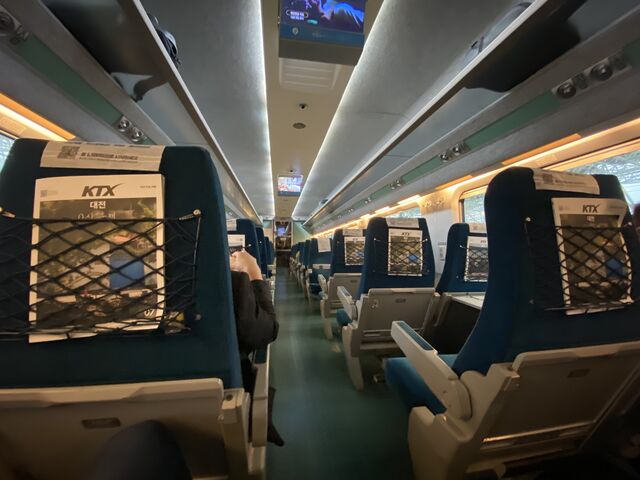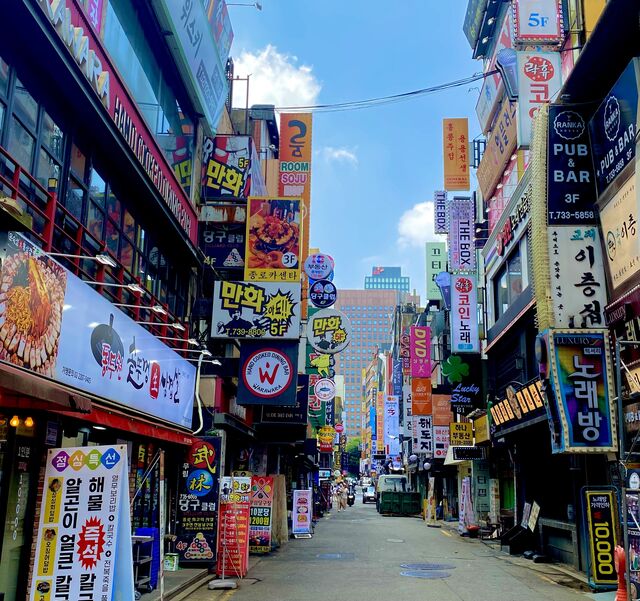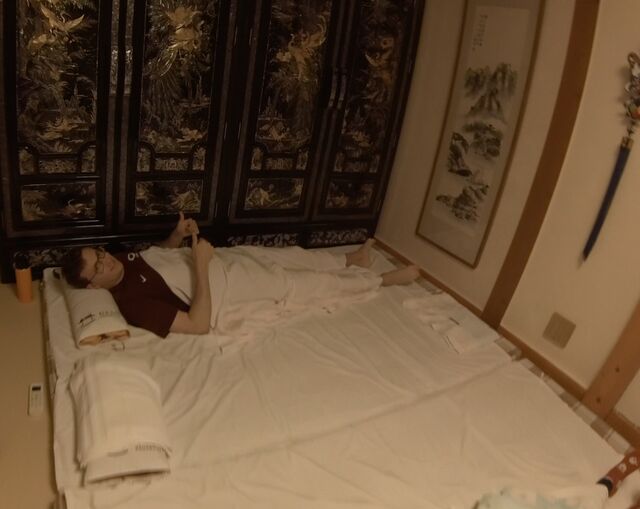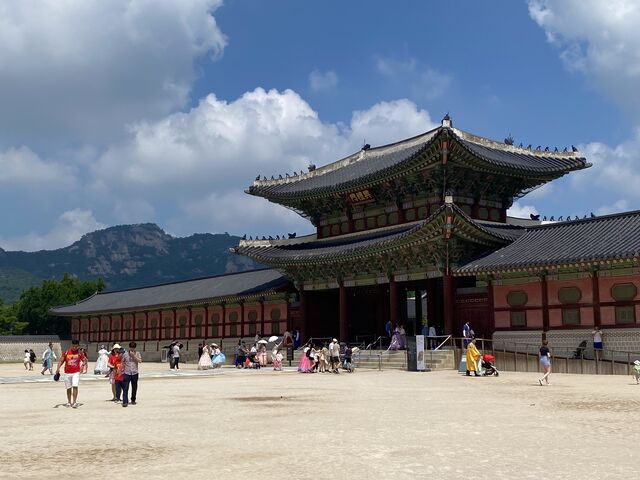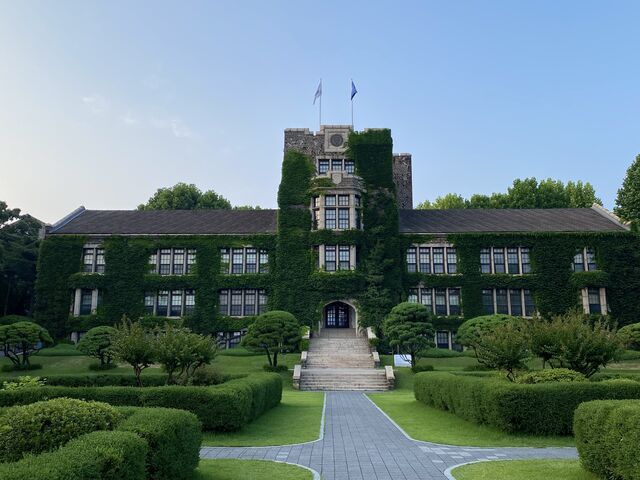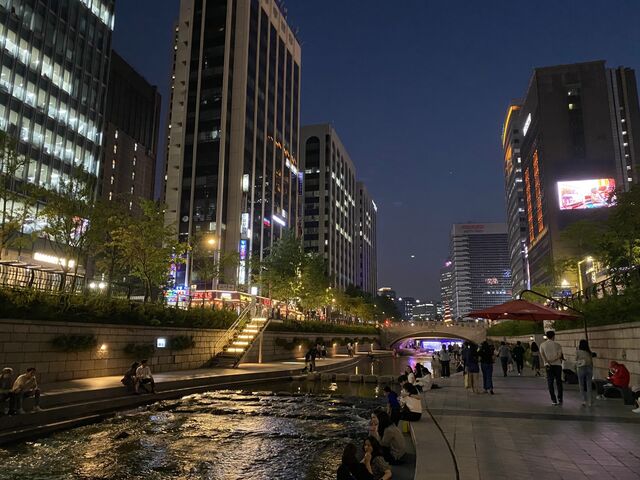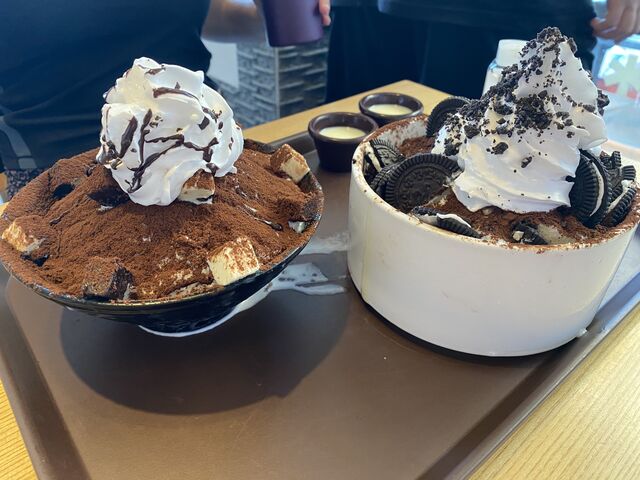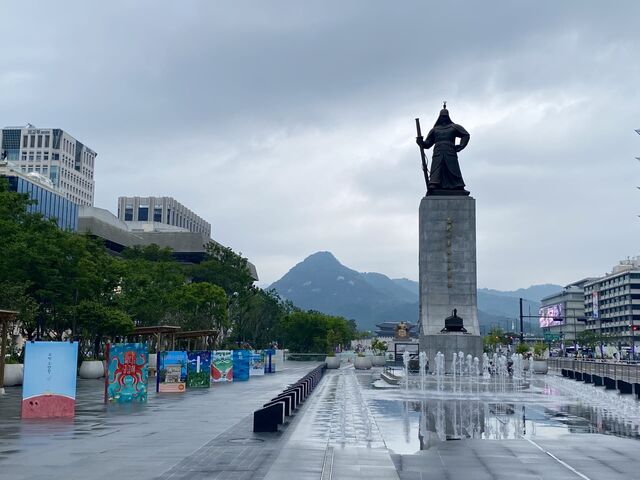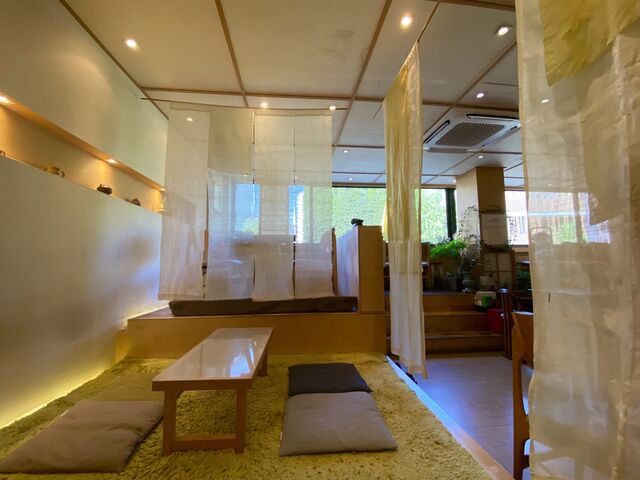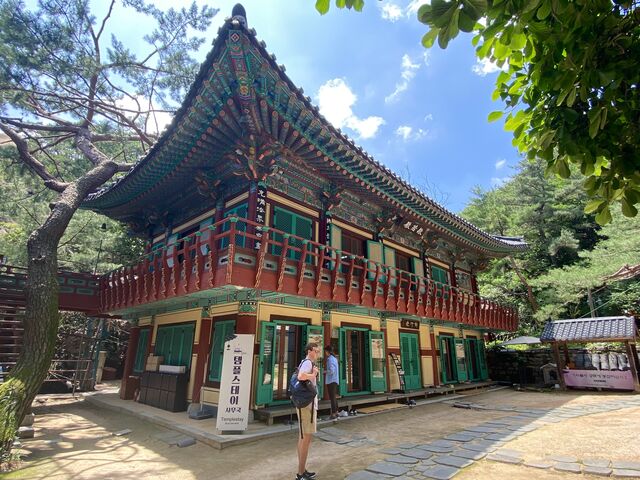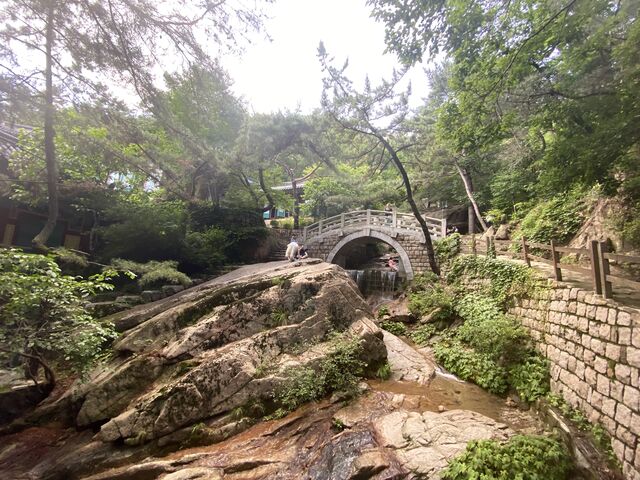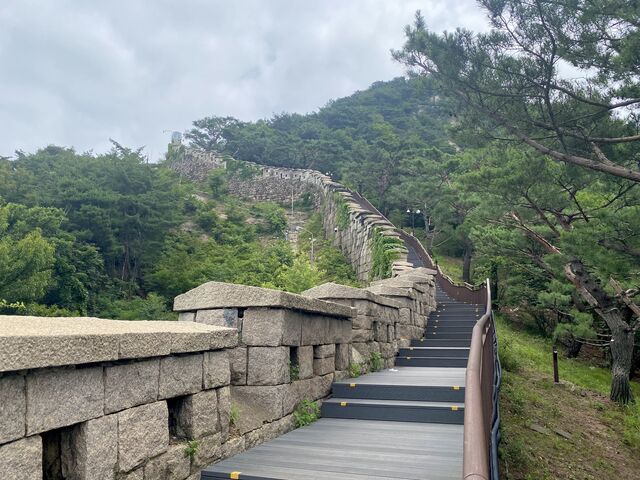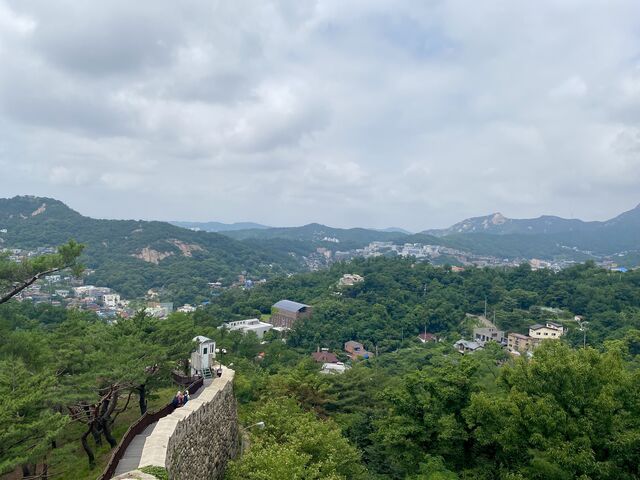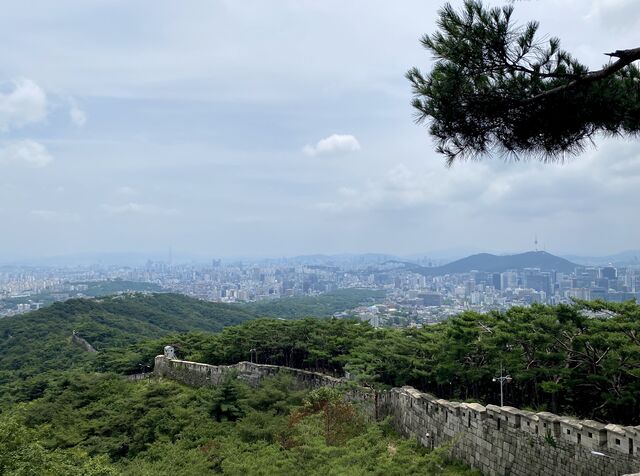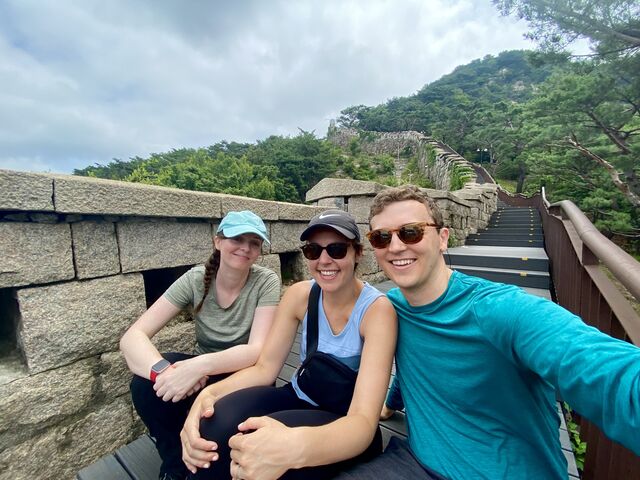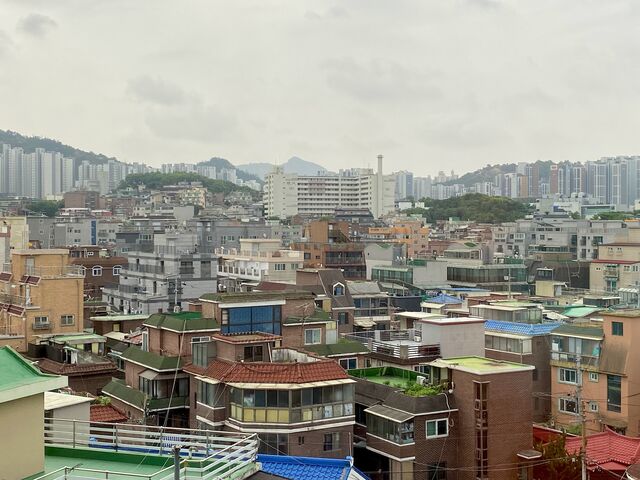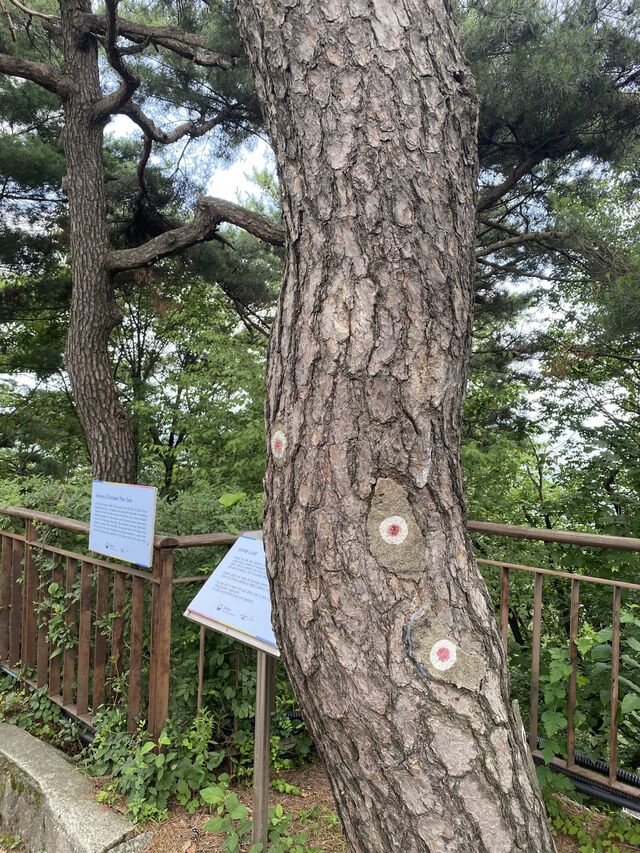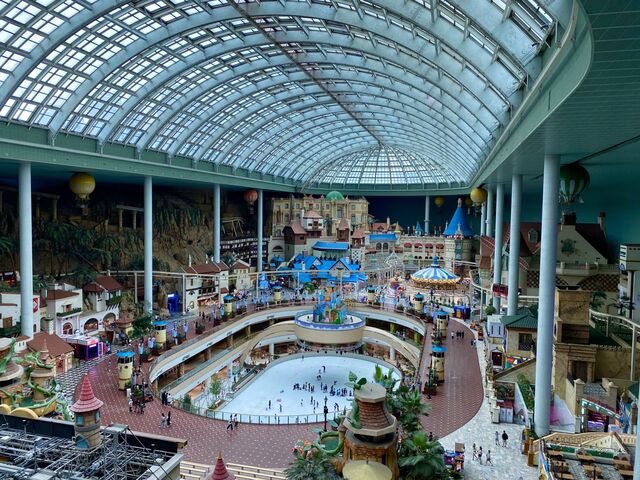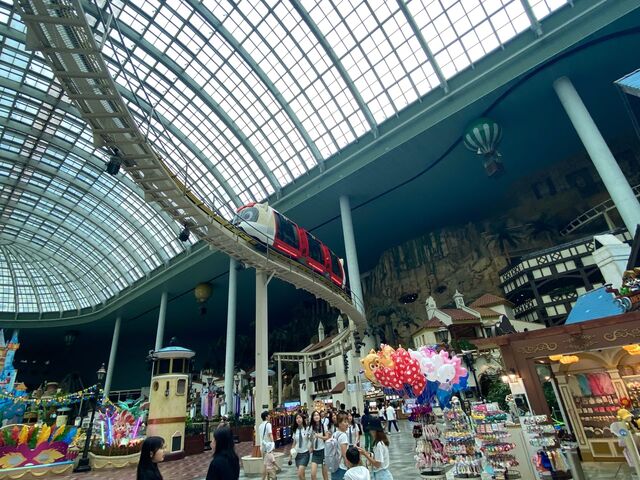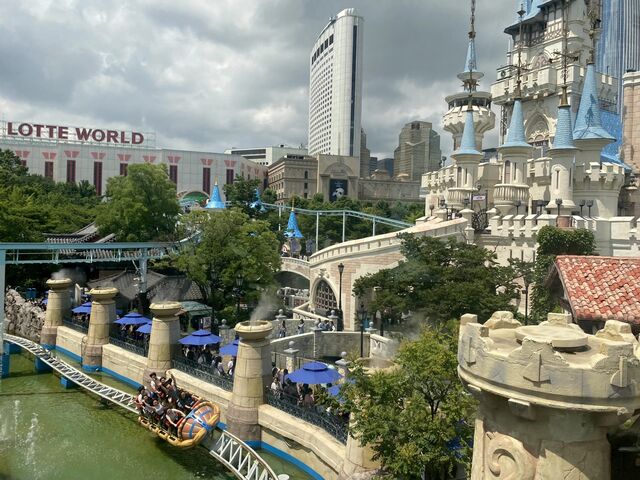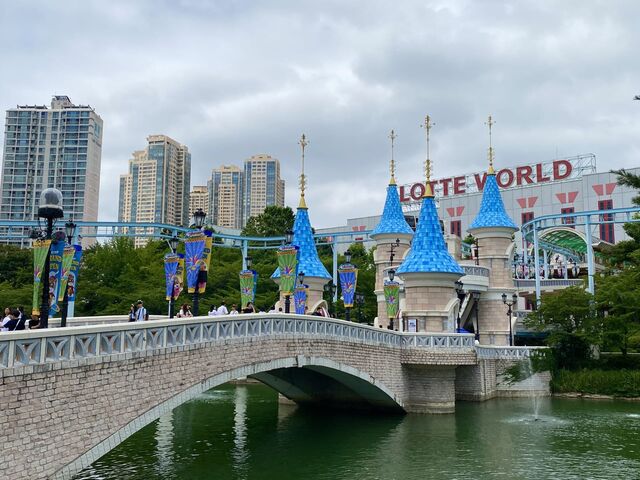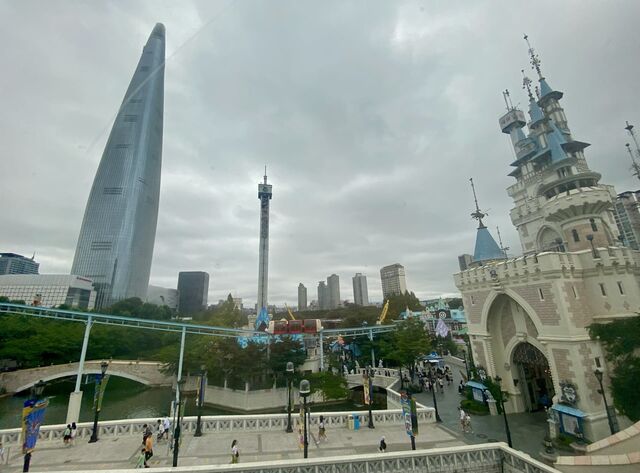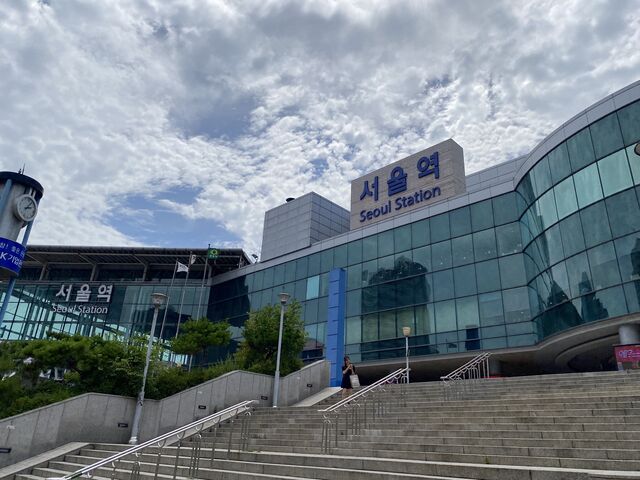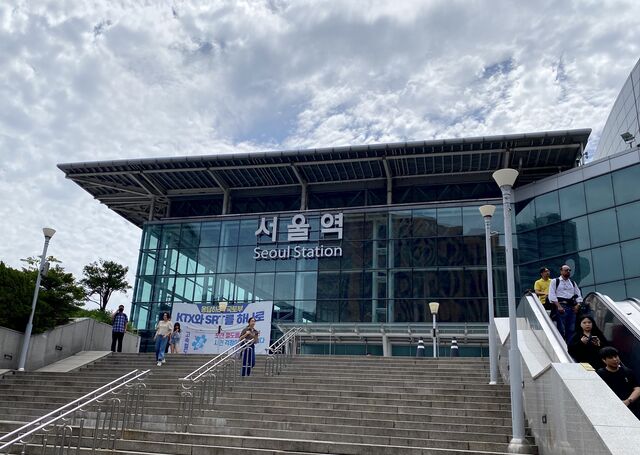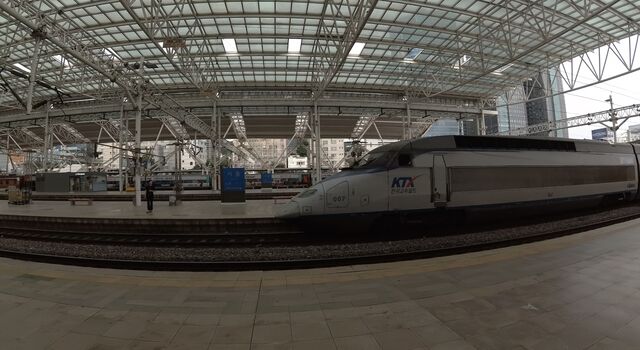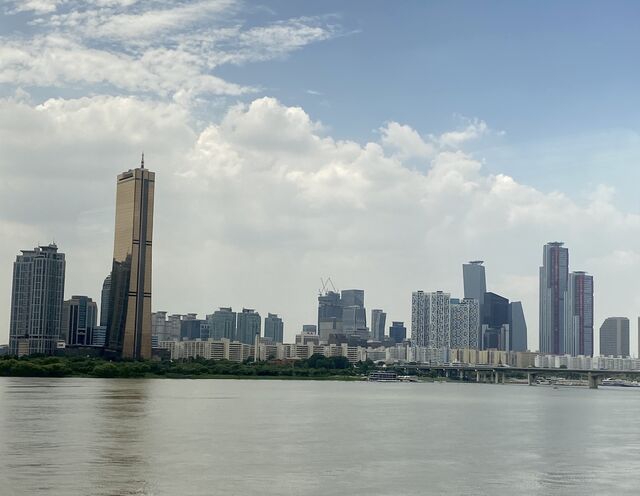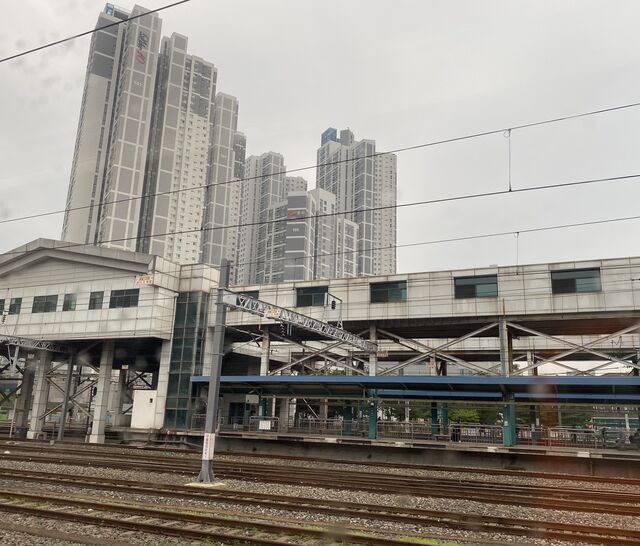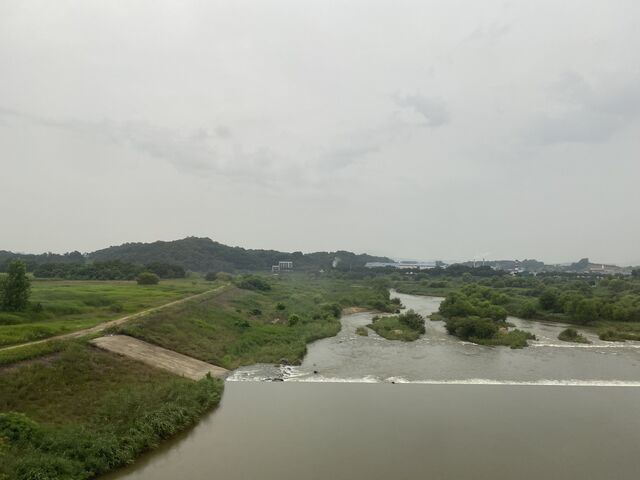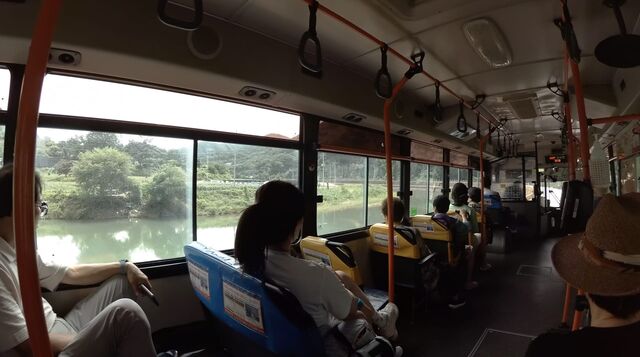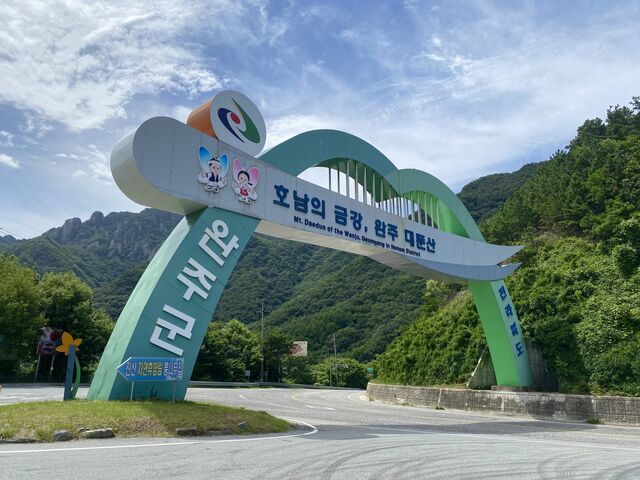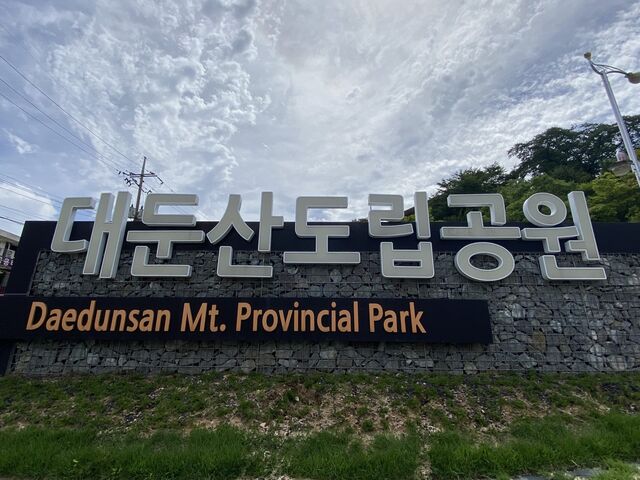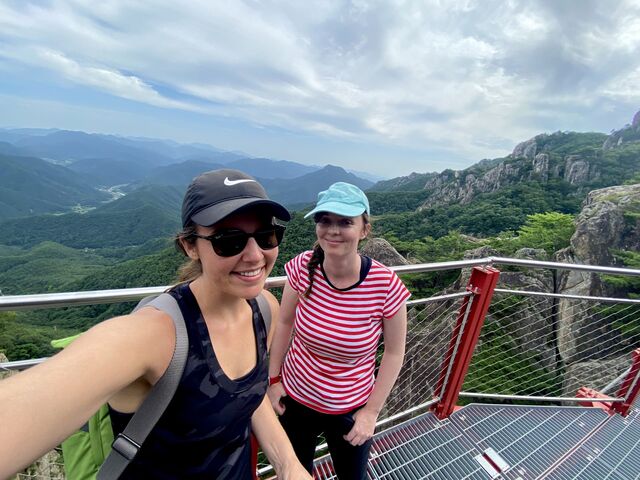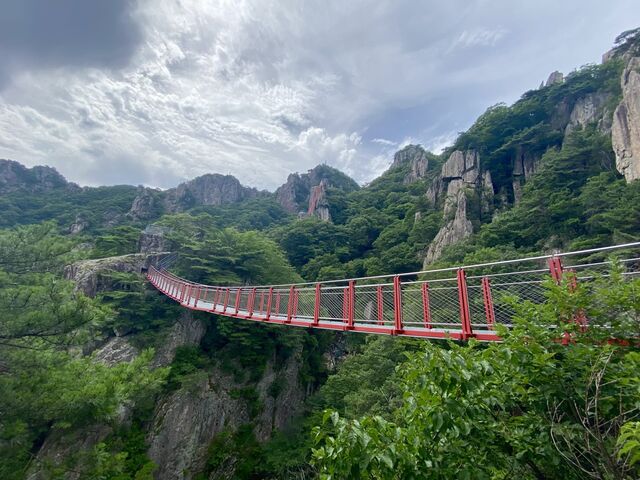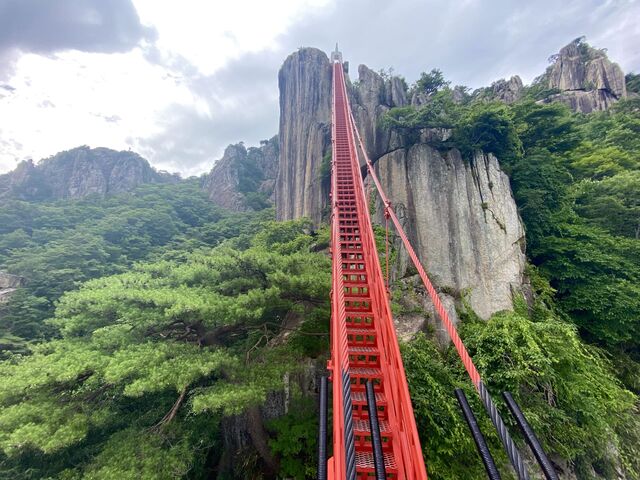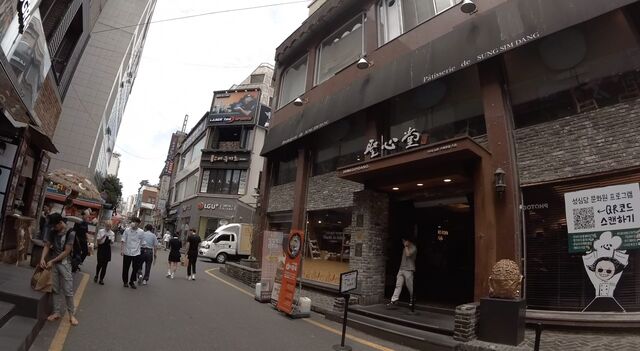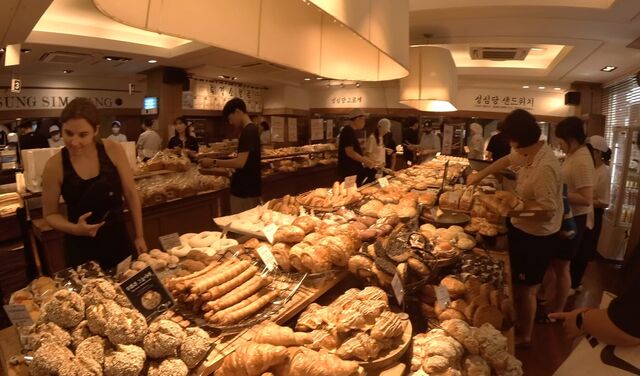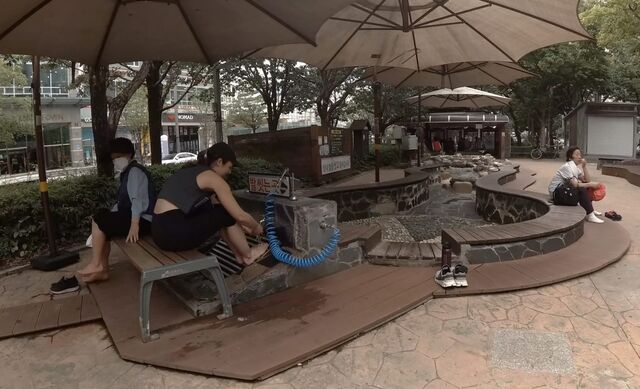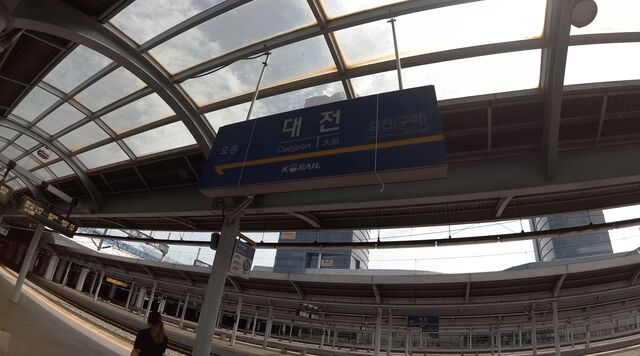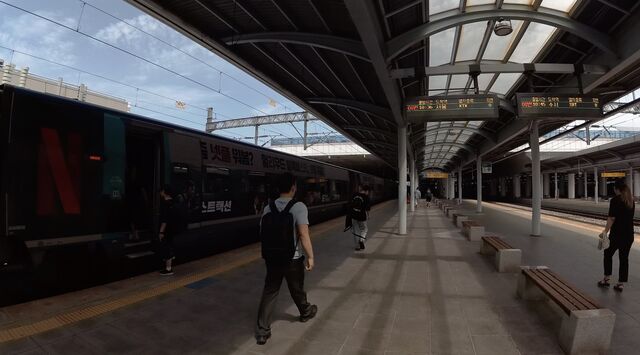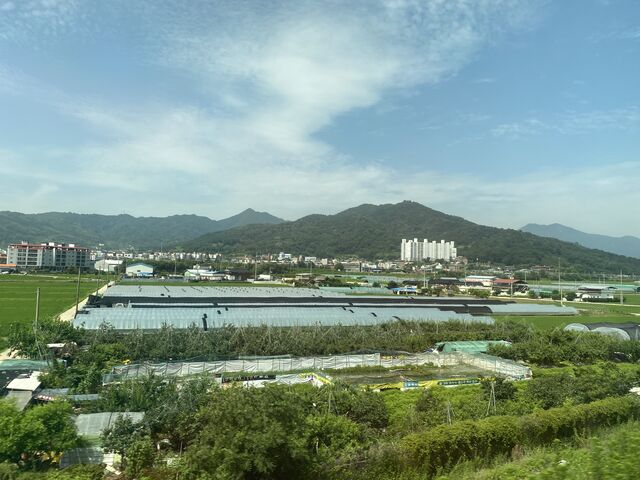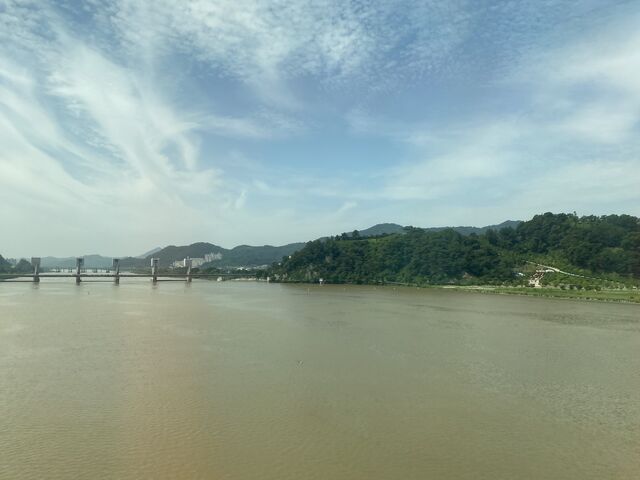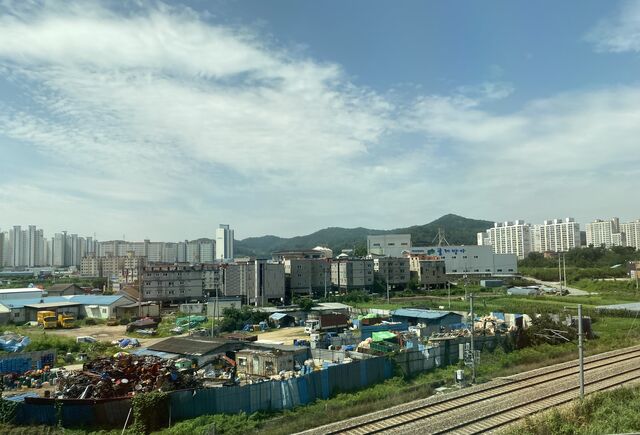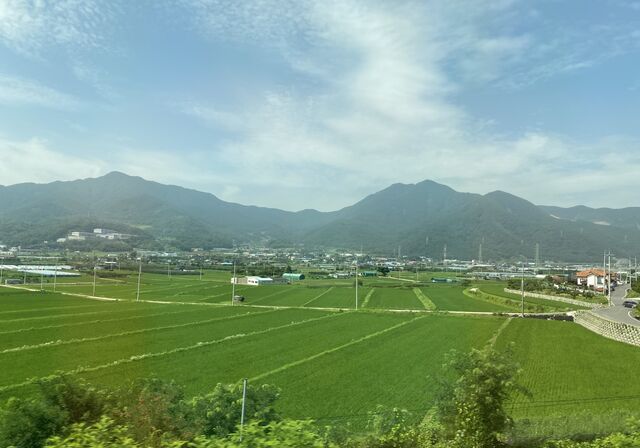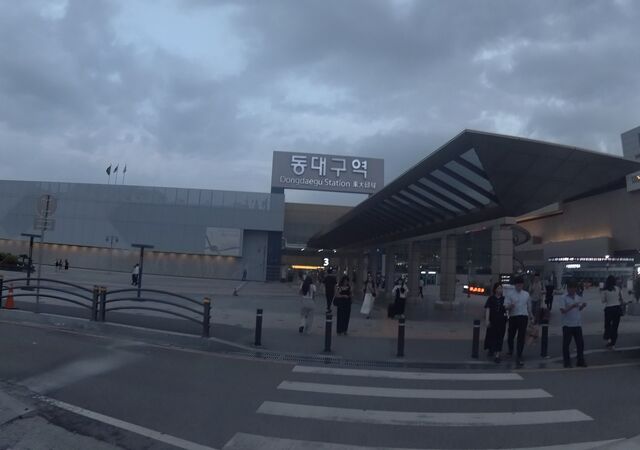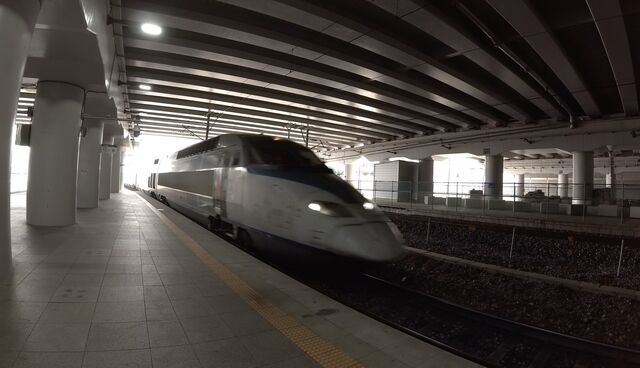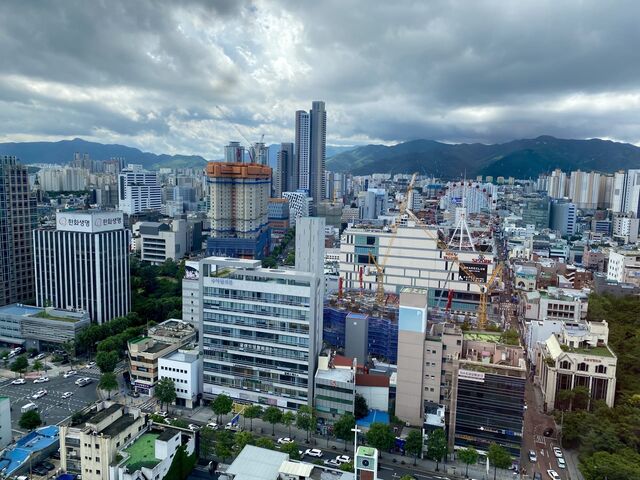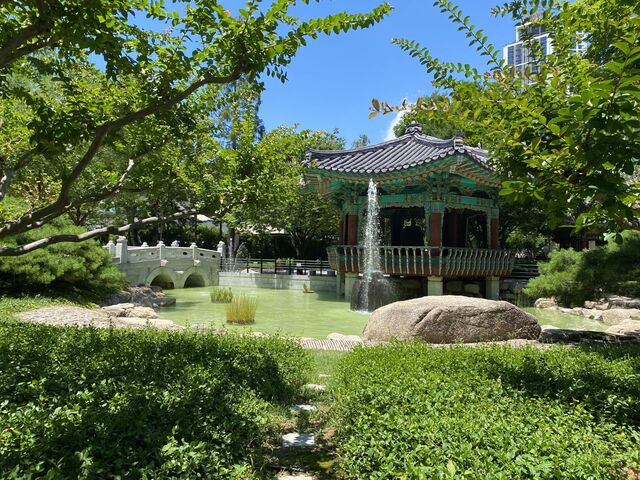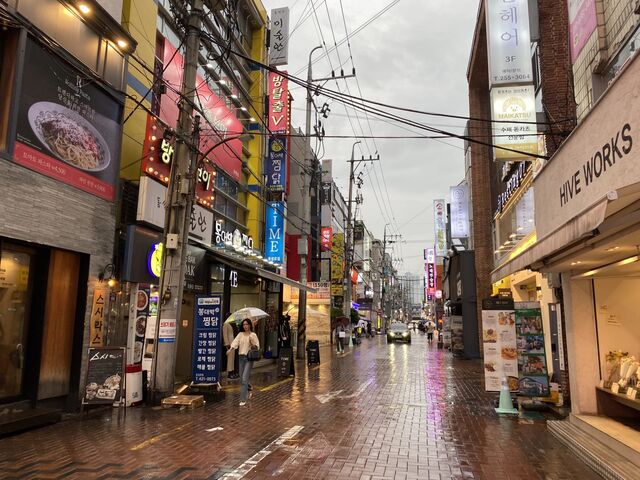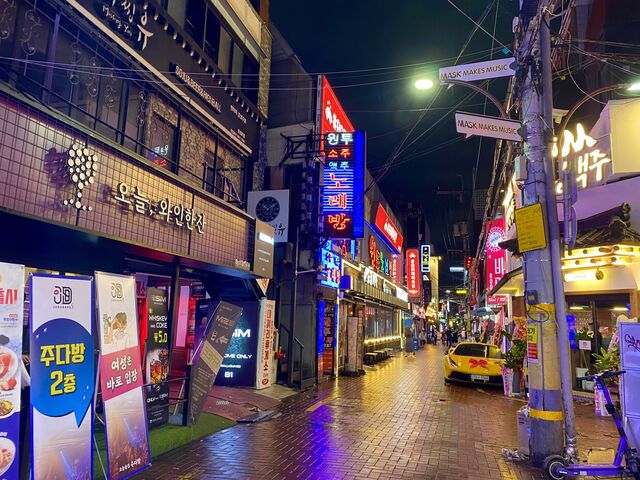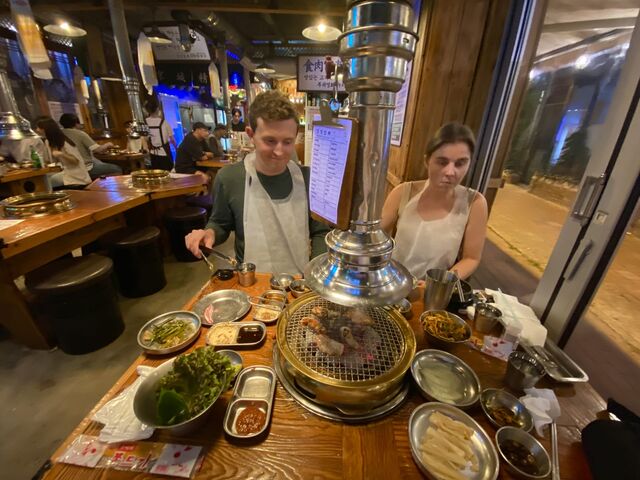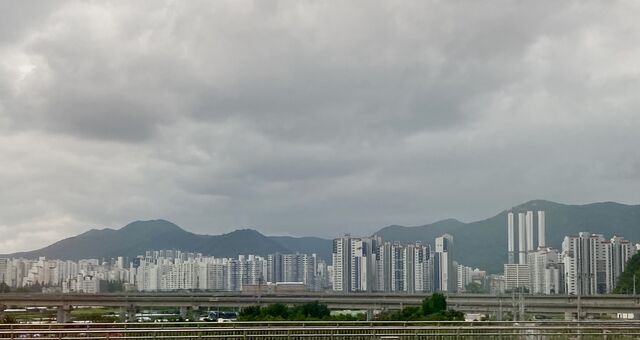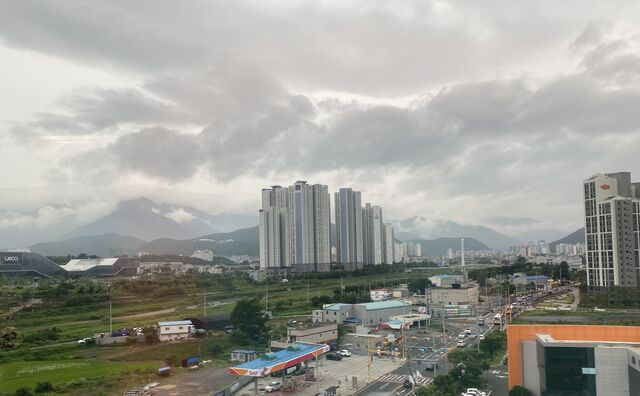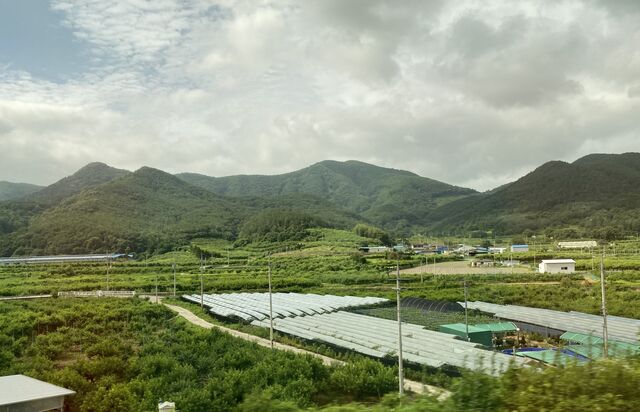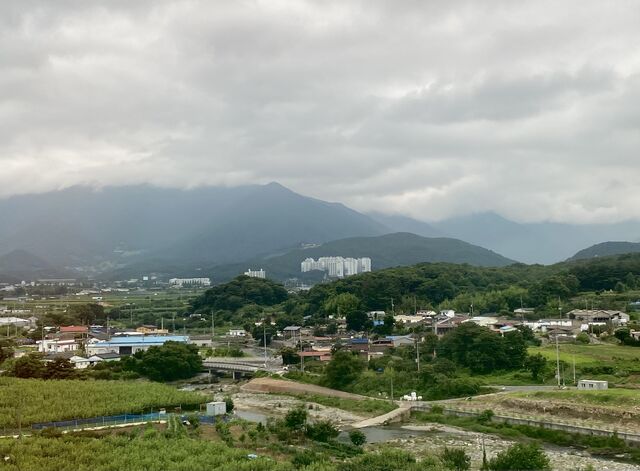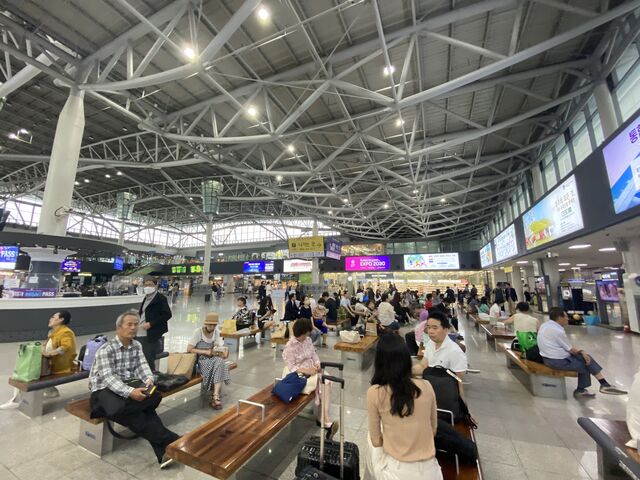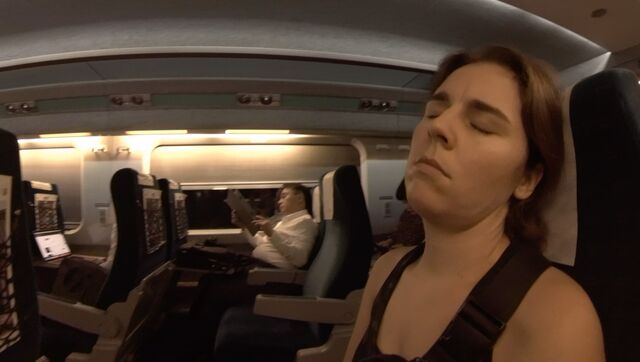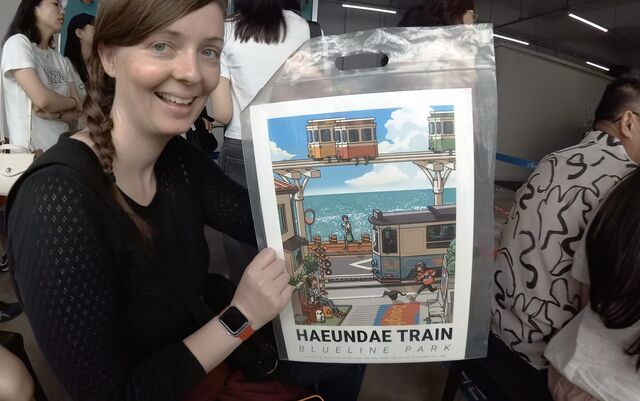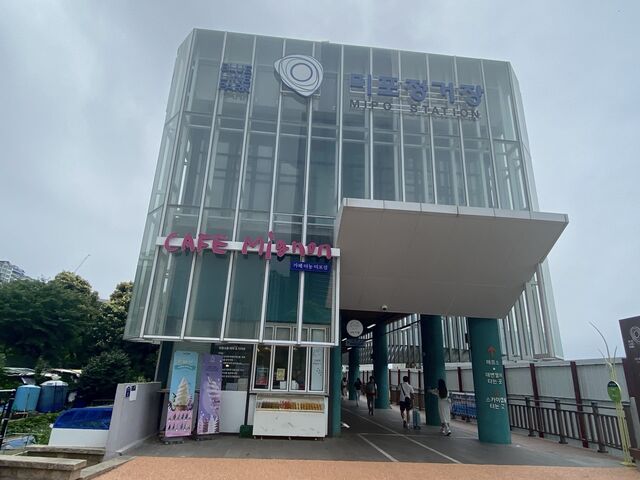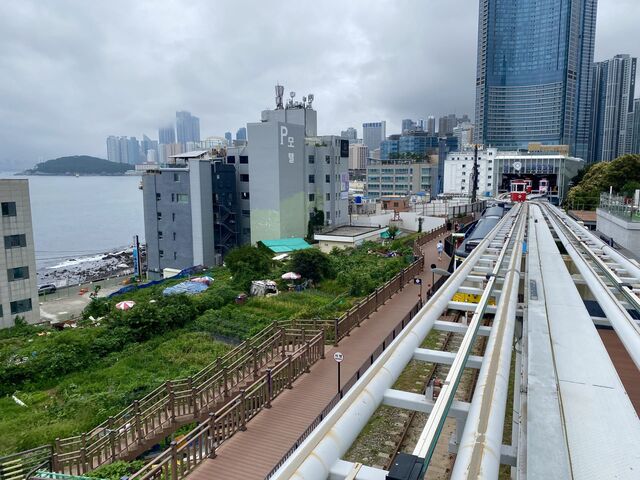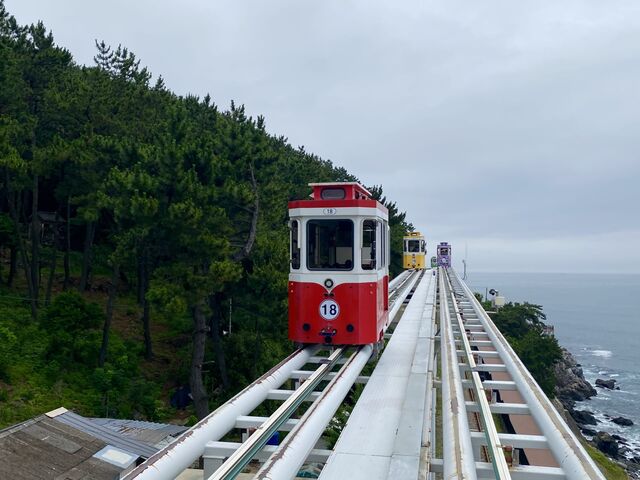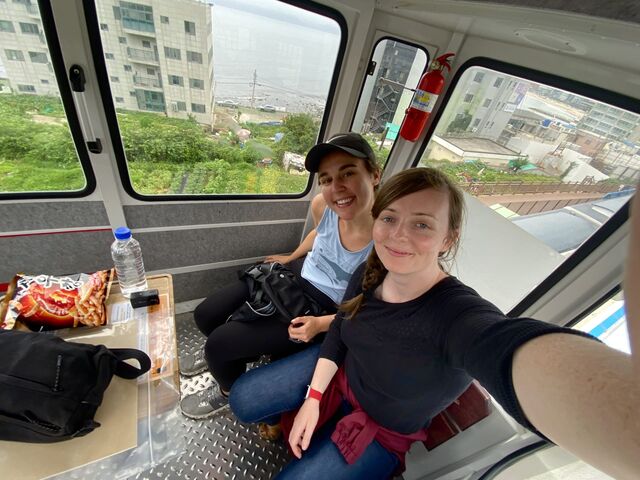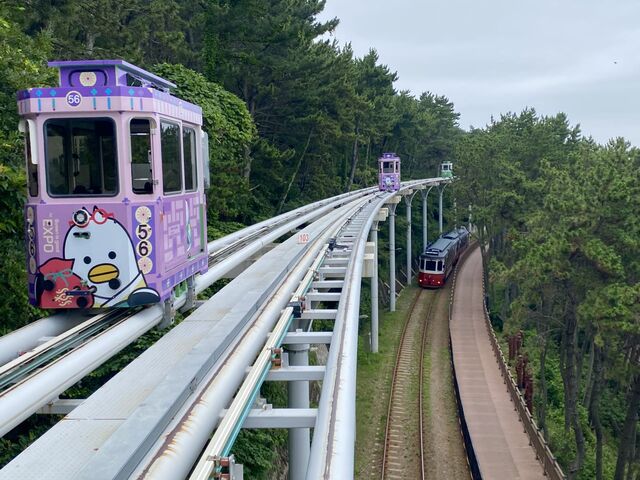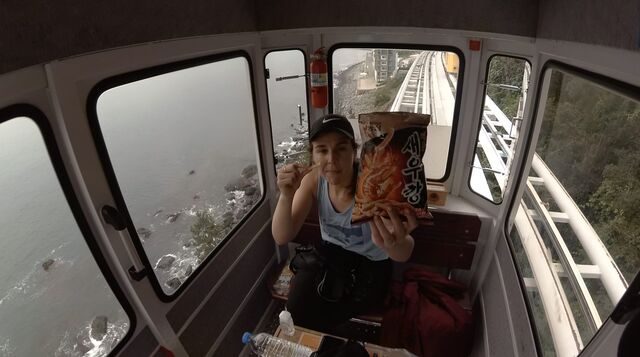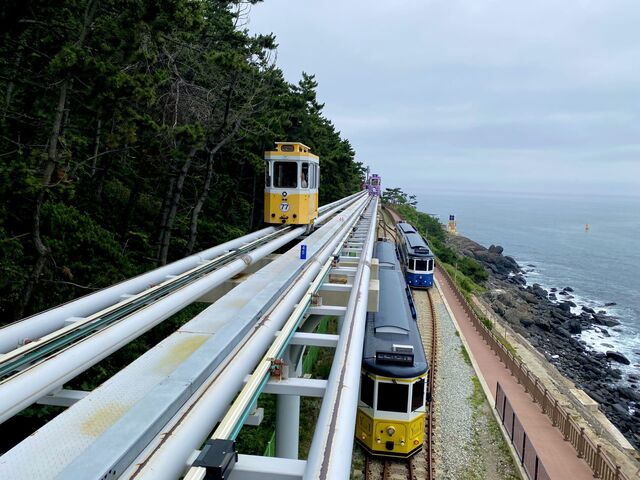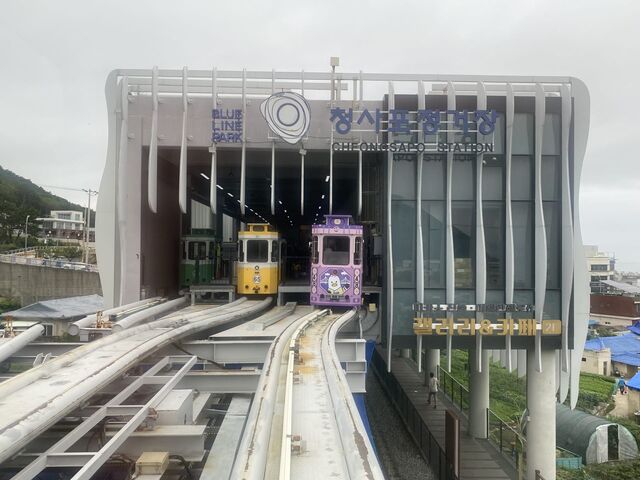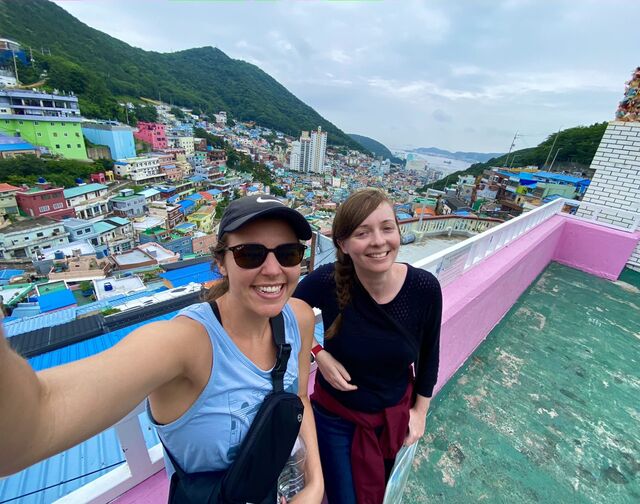In July 2023 I spent 10 days in South Korea, travelling by train to different parts of the country. I enjoyed taking the following train trips:
- Seoul — Daegu
- Daegu — Busan (Return)
- Daegu — Daejeon
- Daejeon — Seoul
As can be seen in the below map, I therefore covered the full route of the Gyeongbu Line—a 447 kilometre route that connects Seoul and Busan. For simplicity, this post will be structured in that order (Seoul–Busan).
Construction of the Gyeongbu Line took place during the Japanese colonial era. When the Russo-Japanese War broke out in 1904, Japan dispatched its army to speed-up construction of the railway line which it viewed as strategically significant.1 Construction was completed in 1905 and it is today South Korea’s most heavily travelled rail line.2 When it first opened, it took almost 14 hours to travel between Seoul and Busan. Today, high-speed trains can complete this route in 2 hours and 15 minutes.
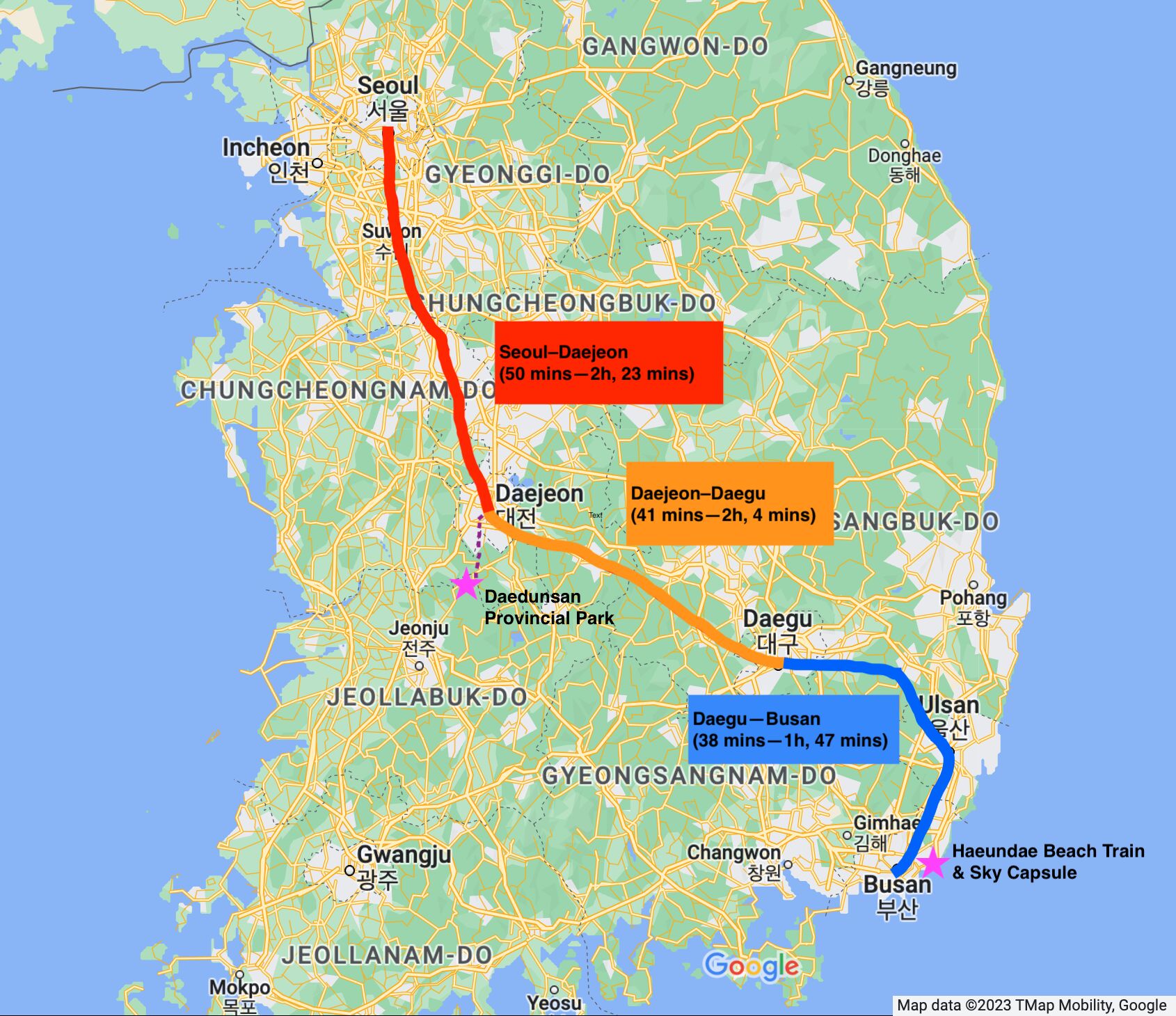
Railway travel in South Korea
There are three main types of trains that operate in South Korea:
- Korean Train eXpress (KTX) — a high-speed express train that runs at a maximum speed of 305 km/h;
- Intercity Train eXpress (ITX) — a train with a maximum speed of 180 km/h; and
- Mugunghwa Train — a standard train which makes stops at small stations which both the KTX and ITX by-pass.
The latter two categories of train usually take a more scenic route with fewer tunnels.
Visitors to South Korea can purchase a ‘KORAIL Pass’ which covers an unlimited amount of train travel within a specified time period. While this pass would be good value if you intend to just travel on the (more expensive) high-speed KTX, you still need to make a reservation and these trains can sell out, especially on Friday evenings and weekends. That said, although KTX tickets often sell out a few days in advance during busy periods, there is a free cancellation policy for train tickets. As such, it is advisable to check if any tickets have become available the day before your intended journey.
My travel companions and I did not purchase a KORAIL Pass and instead travelled on a mixture of all three types of trains. For instance, when we wanted to maximise our day trip to Busan, we travelled via the high-speed KTX. By contrast, on an afternoon where we had some spare time and wanted to relax on a longer train journey, we booked a Mugunghwa train between Daejeon and Seoul.
I did not observe any ticket inspectors walking through the aisle and checking tickets. Rather, every so often a ticket inspector would appear and verify the tickets of certain passengers. As it is assigned seating on the trains, I assume that it is easy enough for the inspectors to monitor which seats are booked (and should therefore be occupied) and which seats should be empty.
It is important to note that when booking train tickets (at least for the KTX), it appears that window seats are automatically allocated to solo travellers. Consequently, two people travelling together may not be seated directly next to each other; they may instead be separated by the aisle.
Seoul
My travel companions and I started our trip in South Korea’s capital city. Our accomodation was a traditional Korean house (‘hanok’) where we slept on a mat on the floor. Our host was very warm and welcoming and called my travel companion and I “beautiful tofu”. We suspect something was lost in translation with the communication app we were using to translate between English and Korean. Nevertheless, we appreciated the compliment. We did find it slightly strange, however, that the breakfast we were served consisted only of one single pancake for three people!
Our hanok accomodation was located close to the famous Bukchon Hanok Village which dates back to the Joseon dynasty. We also enjoyed visiting Gyeongbokgung Palace in northern Seoul (the main royal palace of the Joseon dynasty), as well as Yonsei University, where we strolled through the campus grounds with its Gothic buildings adorned with ivy vines. When night fell, we enjoyed visiting Seoul’s abundance of street food markets and traditional Korean restaurants. I found food in South Korea to be very affordable — a full restaurant meal (served with many side dishes) cost approximately $8 AUD.
Seoul is surrounded by mountains, with Bukhan Mountain positioned at its northern border. We chose to undertake a ’temple stay’ at Geumsunsa Temple—a 600-year old Buddhist mountain temple located in Bukhansan National Park which spans across the foot of Bukhan Mountain. It is a short, but steep hike to the temple, and visitors can select to do an overnight temple stay or a shorter 3-hour experience. As we were not keen to wake up at 4.30am for the ‘dawn chanting ceremony’ which forms a part of the overnight program, we selected the shorter experience which was, once again, very reasonably priced ($30 AUD for the 3-hour experience). Our temple stay included a tour of the temple, an activity where we made bracelets with 108 Buddhist prayers beads (108 is considered a sacred number by the Dharmic Religions including Buddhism), a mediation exercise, and a conversation with a monk over tea. As a small group of us sat around the monk, he shared insights about his life and served us the most exquisite tea I have ever tasted: Ssanggye hydrangea tea.
My favourite activity in Seoul, however, was hiking on the city’s Fortress Wall. The wall was constructed in 1396 to defend the city during the Joseon period. It stretches over 18-kilometres along the ridge of Seoul’s four inner mountains. My travel companions and I walked from Changuimun Gate to Sukjeongmun Gate. This route led us to the highest point of the fortress wall: the peak of Baegak Mountain. The elevated vantage point provided unobstructed, panoramic views of Seoul and I was amazed by the city’s vastness. In every direction, a sprawling metropolis stretched out before us. We took our passports on this hike as we had read that this section of the fortress wall is located in close proximity to the ‘Blue House’—the official residence of the President of South Korea. This part of the route was closed from 1968—2007 after North Korea’s failed assassination attempt on the President. Today, it is a military zone and identification is mandatory for all hikers. Photography looking towards the ‘Blue House’ is also forbidden. During our hike we passed a pine tree with bullet holes from North Korea’s 1968 attack.
On our final day in Seoul we visited Lotte World—a large indoor and outdoor theme park. We enjoyed the two best rides I have ever been on at a theme park: an indoor hot air balloon ride which provides an aerial perspective of the theme park, and the ‘world monorail’ which offers a leisurely journey around the park, traversing both the indoor and outdoor sections. Regrettably, one of my more thrill-seeking travel companions was not impressed with these rides. Visible in the last image below is Lotte World Tower, the 6th tallest building in the world.
Seoul—Daejeon Train
After an enjoyable few days in Seoul we commenced our journey south. The journey from Seoul to Daejeon takes between 50 minutes and ~2.5 hours, depending on the type of train.
Daejeon and Daedunsan
The main purpose of our visit to Daejeon—South Korea’s fifth largest city—was to visit Daedun Mountain which is located south of the city. The mountain was fairly difficult to access via public transport. There was almost no information about how to get there, aside from an outdated blog post we found online. The bus stop in Daejeon was difficult to locate and the bus to Daedun Mountain came infrequently. After a bus journey of approximately 1-hour, we were dropped off a considerable distance from the actual mountain. The remainder of the journey to the base of the mountain had to be completed on foot, which involved a 30-minute walk along the side of a highway. Although there is a bus stop and bus timetable on display near the base of the mountain, the bus does not travel any closer than where it dropped us off. I imagine this is very confusing for many visitors.
As the pictures below show, Daedun Mountain is an incredible hiking destination and I was very surprised by its lack of promotion and accessibility as it could be a major tourist destination.
Despite having ambitious plans to hike to the top of the mountain, my travel companion and I ended up catching a cable car which transported us most of the way. After alighting from the cable car, we hiked for approximately 20 minutes, across a ‘cloud’ suspension bridge, and up the Daedunsan Stairway which was an exhilaratingly experience. The stairway was more like a ladder which stretches from one mountain peak to another.
After heading back to Daejeon, my friend and I checked into the ’love motel’ that we had accidentally booked. These motels, where you can pay per hour, cater to the many young adults in South Korea who still live with their parents. The motel was hidden behind other buildings and entry was through a discrete entrance. The check-in process could be completed through a bank-teller window (so you don’t have to make eye contact with the motel staff), although the elderly gentleman who worked at the reception came out from behind the window to compliment us. Apparently my friend and I are “very handsome”. Our motel room was well-equipped with mirrors, lights, and interesting products.
The pictures below show Daejeon’s city centre. While wandering around looking for food, a nice local man who was riding a bicycle stopped to give us some recommendations. He told us about a famous bakery—Sungsimdang—which offers a huge variety of breads and sweet treats.
We also visited Yuseong Hot Springs to soak our feet in the outdoor foot baths. The hot springs are located in the centre of Daejeon and are free to visit. There were a few different baths to choose from and the water temperature was 49°C. While we had grown accustomed to the local Korean people staring at us in Daejeon (where there are far fewer Western tourists than in Seoul), this experience was intensified during our time in the foot bath. The prolonged stares from the group of elderly Koreans sitting around us somewhat detracted from the otherwise relaxing experience.
My travel companion and I were a little uncertain about some of the rules at the hot springs. Before entering the foot bath you are required to wash and dry your feet. However, to access the foot bath you then have to walk across the dirty pavement which seemed counter-intuitive. During the foot-washing process we made friends with an elderly Korean woman who was laughing with us and initially seemed very friendly. However, when we showed her our translation app on the phone, with the intention of asking her whether we should walk across the pavement barefoot or put our shoes back on, she suddenly became very aggressive and would no longer speak to us.
Another interesting encounter occurred when an elderly gentleman picked up our shoes with his walking stick and started carrying them away while mumbling loudly to himself.
Daejeon—Daegu Train
The train journey between Daejeon and Daegu takes between ~40 minutes and ~2 hours (depending on the type of train). The scenery alternated between lush green fields, rolling hills, and more mountainous terrain.
Daegu
My friends were residing in Daegu at the time of my visit, so I was able to spend a few days seeing how they live in the city.
I thoroughly enjoyed my time in South Korea’s fourth largest city. Our accomodation was well-situated in the downtown district of Jung-gu which is bustling with fashion stores, restaurants, and cafes. We also visited a street with traditional medicinal stores where I was delighted to purchase the Ssanggye hydrangea tea that the monk had introduced us to during the temple stay in Seoul.
Daegu–Busan Train
While staying in Daegu, we took a day trip to the port city of Busan. It took ~40 minutes to travel between these cities via the high-speed KTX train.
Busan (including Haeundae Beach Train and Sky Capsule)
Busan is situated beside the Sea of Japan and is South Korea’s second largest city. It felt vastly different from the other cities we had visited, with its beaches and resort-like atmosphere.
The main reason I wanted to visit Busan was to see the Haeundae beach train and sky capsule. The sky capsule is elevated 7–10 metres above the ground and travels at a leisurely pace of 4 km/h along an aerial railway. The Haeundae beach train travels directly below on the former Donghae Nambu Railway Line which runs adjacent to the coast. It is the world’s first battery-charged eco-friendly train.
Upon arriving at Mipo Station, we had to wait approximately 45-minutes to board the sky capsule. Each capsule is private which contributes to the long queue times. The total journey time in the capsule was about 30 minutes. Upon arrival at the end destination—Cheongsapo Station—we noticed that there were hardly any people waiting to board the sky capsule to travel in the opposite direction to Mipo Station. To avoid the long queues, commencing the journey at Cheongsapo Station would therefore be advisable.
After alighting from the sky capsule, we realised that it would take 2.5 hours to travel by public transport to the other main attraction we wanted to visit in Busan: Gamcheon Culture Village. Although public transport is quite efficient in South Korea, the sheer size of its main cities often results in lengthy travel times. Luckily we had previously discovered in Seoul that taxis are incredibly cheap in South Korea, so we enjoyed a comfortable taxi ride to the other side of Busan.
Perched on a steep mountain-side slope, Gamcheon Culture Village is famous for its brightly painted houses and winding labyrinth-like alleys. The colourful village contains many mural paintings from local and international artists, and the streets are lined with artisan shops and galleries.
After an enjoyable day in Busan we made the return journey back to Daegu.
Overall, I found the trains in South Korea to be comfortable, punctual, and inexpensive. Visitors seeking to travel rapidly through South Korea’s countryside and cities should select the KTX (high-speed train). Or, for a more relaxing journey, select one of the slower trains and enjoy the picturesque rice fields, mountains, and small rural towns en route.
